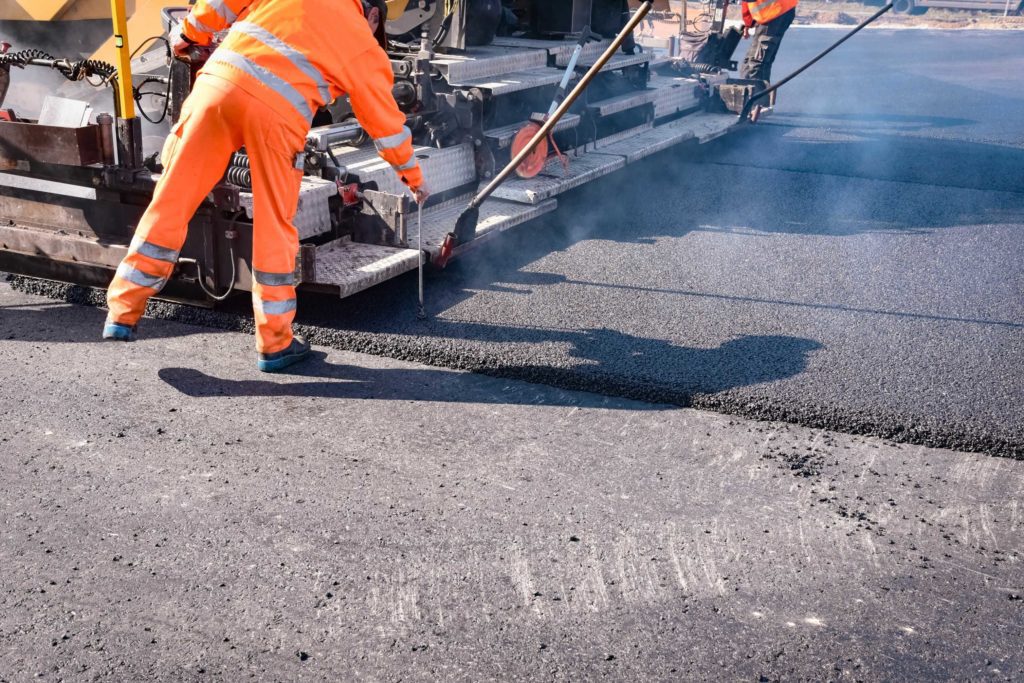Full-Depth Asphalt Repair: Addressing Structural Issues Beneath the Surface
by siteadmin

Asphalt is the backbone of our roadways, providing smooth and durable surfaces for safe transportation. However, over time, wear and tear, traffic loads, and environmental factors can lead to structural issues beneath the surface, compromising the integrity of the pavement. When surface patching is no longer sufficient, full-depth asphalt repair becomes necessary to address these underlying problems. In this blog post, we’ll explore the importance of full-depth asphalt repair and the process involved in restoring the structural integrity of damaged pavements.
Understanding Full-Depth Asphalt Repair
Full-depth asphalt repair, also known as full-depth reclamation or full-depth reconstruction, involves removing and replacing the entire pavement section, including the base and subbase layers. This comprehensive approach is necessary when the underlying structure of the pavement has been compromised due to factors such as:
- Subgrade Failure: Weak or unstable subgrade soil can lead to pavement settlement, cracking, and rutting.
- Water Damage: Water infiltration can erode the base and subbase layers, leading to pavement deterioration and pothole formation.
- Heavy Traffic Loads: High volumes of traffic or heavy vehicles can cause fatigue cracking and structural fatigue in the pavement layers.
By addressing these structural issues at their root, full-depth asphalt repair restores the pavement’s load-bearing capacity, durability, and longevity.
The Process of Full-Depth Asphalt Repair
Full-depth asphalt repair typically follows a systematic process:
- Assessment and Planning: A thorough assessment of the pavement condition is conducted to identify areas of structural damage and determine the extent of repairs needed. Based on the assessment, a repair plan is developed, outlining the scope of work and materials required.
- Pavement Removal: The damaged pavement section is excavated to the desired depth, typically extending below the subgrade to ensure complete removal of compromised materials. Excavation may be performed using milling machines, excavators, or other heavy equipment.
- Subgrade Preparation: The subgrade soil is evaluated and prepared to provide a stable foundation for the new pavement. This may involve compacting the soil, adding stabilizing agents, or improving drainage to mitigate future issues.
- Base and Subbase Installation: New base and subbase materials are installed to the specified thickness and compacted to achieve the desired density. These layers provide support and stability for the asphalt surface and help distribute traffic loads evenly.
- Asphalt Placement: Hot mix asphalt (HMA) or other suitable asphalt materials are placed and compacted to the required thickness using asphalt pavers and rollers. Proper compaction ensures optimal density and uniformity, minimizing the risk of future pavement distress.
- Finishing Touches: Once the asphalt is in place, final adjustments and surface treatments may be applied to ensure a smooth, uniform finish. This may include sealing joints, applying surface treatments, or installing pavement markings.
Benefits of Full-Depth Asphalt Repair
Full-depth asphalt repair offers several benefits:
- Structural Integrity: By addressing underlying structural issues, full-depth repair restores the pavement’s load-bearing capacity and structural integrity.
- Longevity: Properly executed full-depth repairs can extend the lifespan of the pavement, reducing the need for frequent maintenance and costly repairs.
- Safety: A structurally sound pavement minimizes the risk of accidents and injuries caused by potholes, uneven surfaces, and pavement failures.
- Cost-Effectiveness: While full-depth repair may require a larger initial investment, it can be more cost-effective in the long run by reducing the need for frequent repairs and premature pavement replacement.
Full-depth asphalt repair is a critical process for addressing structural issues beneath the surface of damaged pavements. By removing and replacing the entire pavement section, this comprehensive approach restores the pavement’s structural integrity, durability, and longevity. Whether addressing subgrade failure, water damage, or heavy traffic loads, full-depth asphalt repair ensures that our roadways remain safe, reliable, and functional for years to come.
Interested in deepening your understanding of asphalt paving? Here’s another relevant article specifically for you! The Evolution of Asphalt Paving
Asphalt is the backbone of our roadways, providing smooth and durable surfaces for safe transportation. However, over time, wear and tear, traffic loads, and environmental factors can lead to structural issues beneath the surface, compromising the integrity of the pavement. When surface patching is no longer sufficient, full-depth asphalt repair becomes necessary to address these…
Recent Posts
- Asphalt Sealing Rochester NY – A Women-Owned Business With a Mobile App
- Asphalt Sealing Rochester NY – A Women-Owned Business With a Mobile App
- Maximizing the Longevity of Your Driveway: Effective Maintenance Strategies with Protective Sealants
- Full-Depth Asphalt Repair: Addressing Structural Issues Beneath the Surface
- Choosing the Right Driveway Repair Materials: Assessing Durability and Longevity
